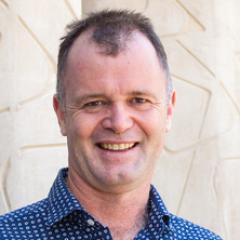Catchment scale landscape planning for water sensitive city-regions in an age of climate change
Cities are not isolated entities - they exist within, connect with and ultimately depend on landscapes which extend far beyond their actual built edge or boundary. A water sensitive city needs to be understood in relation to its broader catchment, the different landscape types and the various local needs for water that occur within that catchment. The need for food production and industry such as resource extraction must be balanced with the needs of the natural environment, urbanisation and related activities such as outdoor recreation. The future of these landscapes, recognising all of these values, needs to be planned in an integrated manner with a whole-of- catchment perspective to sustainably manage Australia’s projected population growth and build resilient communities.
The project aims to develop an integrated approach to whole-of- catchment planning and management that is capable of linking the ecology and hydrology of cities to their region whilst accommodating urban and peri-urban growth adapted to a changing climate. It will explore alternative institutional arrangements for catchment planning and management from a landscape-scale perspective.
Funding
- CRC Water Sensitive Cities
Project Outcomes
At completion, the project will have developed an urban metabolism framework capable of incorporation into a conceptual model of a city-region or whole-of- catchment system. This conceptual model will assist in evaluating regional water budgets and urban growth scenarios along with methods for incorporating ecological and water science into statutory planning processes.
Researchers are working on producing a growth scenarios report detailing methods for incorporating ecological and water science into statutory planning and developing an assessment of planning policies and water security under various growth scenarios for three case studies of Perth, Melbourne and Brisbane.
The completion of all the deliverables for Project B1.2 was reported in the previous quarterly report (FY16-17 Q4). In this quarter, documentation describing the final deliverables was finalised.
Griffith University and University of Queensland researchers also worked jointly on bringing together the final outcomes from each of the completed components of the research, i.e. how urban water metabolism evaluation using the UMEF for Water framework can inform urban planning.
Publications
S. King, S. K. Kenway, M. A. Renouf (2019). How has Urban Water Metabolism Been Communicated? Perspectives from the USA, Europe and Australia. Water Science and Technology.
Renouf, M.A., Kenway, S.J., Lam, K.L., Weber, T., Roux, E., Serrao-Neunann, S., Low Choy, D., Morgan, E. (2018). Understanding urban water performance at the city-region scale using an urban water metabolism evaluation framework. Water Research, in press, doi: 10.1016/j.watres.2018.01.070. Copyright © 2018 Elsevier Ltd.
Renouf, M. A., Serrao-Neumann, S., Kenway, S. J., Morgan, E. A., and Choy, D. L. (2017). Urban water metabolism indicators derived from a water mass balance–bridging the gap between visions and performance assessment of urban water resource management. Water Research. 122, pp. 669-677. Copyright © 2017 Elsevier Ltd.
Schuch, G., Serrao-Neumann, S., Kenway, S. J. and Low Choy, D. (2014). Are we there yet? Integrated water sensitive open space planning for climate change adaptation. In: Climate Adaptation 2014: Future Challenges, 30 September – 2 October, Gold Coast, Australia
Project members
Other members
- Dr Marguerite Renouf
- Dr. Silvia Serrao-Neumann
- Prof. Peter Davies (The University of Western Australia)
- Dr. Edward Morgan (Griffith University)

